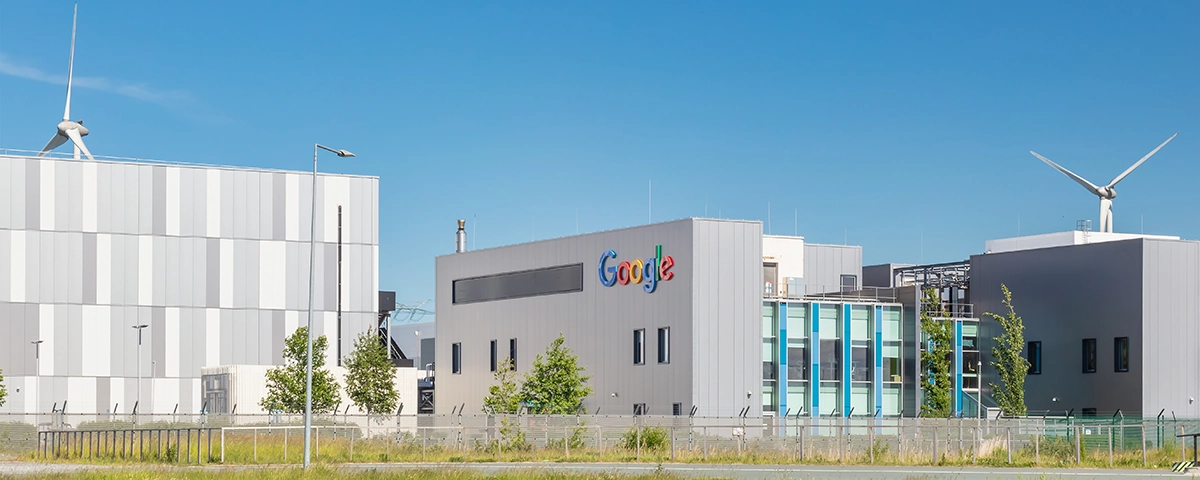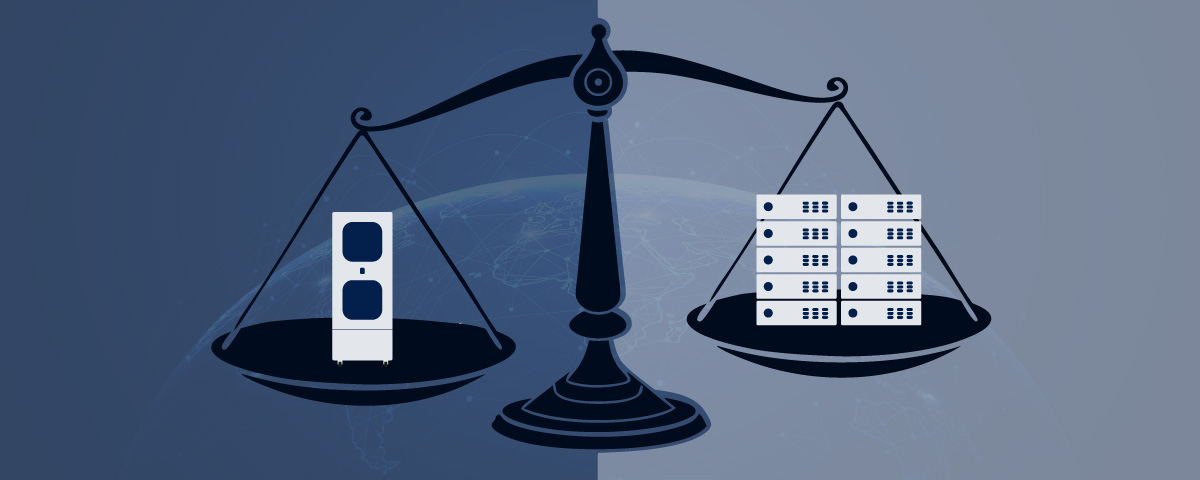As our demand for data increases, so too does the need to store it. Data centres are home to every upload, cloud-saved photo, document, TV traffic and more – including mobile phone requirements and the imminent global rollout of 5G. While this might not seem as power-hungry as the historical large energy consumers, such as oil companies, these new titans of industry are quietly gobbling up vast amounts of the world’s power.
Never-ending banks of circuit boards are housed in aircraft hangar-sized storage units of the largest global companies (Apple, Microsoft, Facebook, Amazon and Alphabet). At present, data centres around the world consume more annual energy than some small countries, with the need rising exponentially. While data centres currently account for only 0.3% of the world’s carbon emissions, the demand is projected to increase dramatically over the next few years.
The information and communications technology (ICT) as a whole is projected to increase energy requirements by 20% in the years up to 2030, with data centres accounting for a third of that usage.
Current energy use
At present, despite this increased demand, companies are managing to keep a cap on their energy needs. This is down to a few reasons, namely switching from older facilities to newer, more energy-efficient locations. However, while this is currently effective, if nothing is done to mitigate this, the situation will not be so positive in 5-10 years.
With the above-mentioned projection about increased use, ICT energy needs and carbon emissions are set to be on a par with aviation. Add in the burgeoning use of cryptocurrencies and this environmental disaster could be upon us even sooner than expected.
So, what is being done about it?
The future of data storage
While we talk about ‘the future’, some of the infrastructure to deal with this is already planned or in place. The giant tech companies have constructed what are known as hyperscale data centres – enormous, energy-efficient concerns that can easily be scaled as needed, up to hundreds of thousands of servers.
These provide, quite literally, the bare bones of storage – stripping out obsolete needs, such as video monitors, video connectors, blinking lights and even elements that are sucking up power for no particular need (so-called ‘zombie’ tech). This hyperscale shift is proving extremely efficient, although it can’t – alone – address all of the electricity needs.
One of the big issues is that of cooling. All this data storage generates huge amounts of heat, something that’s historically cooled with energy-guzzling air conditioning and cooling towers. One solution has been to site these hyperscale storage centres in cooler climates to take advantage of natural air flow.
Other methods of more efficient cooling are being trialled, such as:
- Warm water cooling: where piped water is used to conduct the heat away from the servers
- Immersion cooling: immersing servers in non-conducting oil or mineral baths – a specialist area that requires expert maintenance
There are also trials to use the generated heat and feed it into other areas. This is, so far, limited to use that’s near the data centre. Examples include heating a nearby swimming pool or homes in close proximity to the data centre.
Other innovations for the use of this heat include:
- Attempts to turn it into usable electricity
- To run cooling devices, therefore making a self-sustaining circuit
Of course, the use of renewable electricity is a further way that consumption and carbon footprint can be streamlined – something that the tech giants are already doing as far as possible, although there’s significant room for improvement.
The other possibility being mooted is that of reducing our seemingly insatiable requirement for data. However, this seems an unlikely possibility as there are no indications that the population is even remotely interested in this. This leaves the only way forward to be that of reducing data centre power needs – something that’s going to be very interesting to watch in the decades going forward.
If you’re looking for an easy way to reduce your carbon footprint, have a look at our energy efficient micro data centres. A Zella Pro will allow you to:
- Reduce the cooled area from an entire room / floor to an area the size of a refrigerator
- Match your cooling and energy efficiencies with your IT load at all times
- Program units to shut down during non-productive times (weekends and holidays)
And with a PUE of 1.2, you will see a massive reduction in your carbon footprint, operational costs and energy bills.
Get in touch or head over to our products page to find out more.





